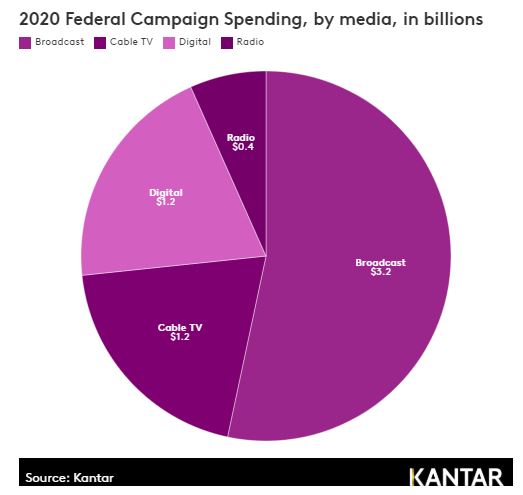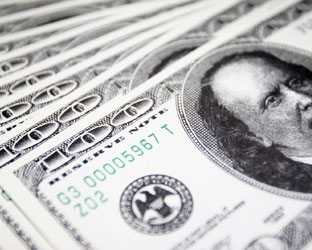MIAMI — For radio broadcasting companies, the addition of political advertising dollars to their overall revenue in 2020 is something many C-Suiters have been salivating about for the last several quarters.
But, is Radio far behind other media? New data from Kantar Media says yes, with Radio far behind digital media.
As the First Democratic Debates began, Kantar released a new forecast that shows the 2019-2020 federal election cycle will likely generate $6 billion in political advertising.
But, the big headline is that Kantar projects a significant increase in digital ad spending in 2020, with the channel receiving 20% of total political ad spend, or $1.2 billion.
Broadcast and cable television political ad spending will remain strong, with broadcast attracting $3.2 billion and cable attracting $1.2 billion.
Radio? It offered no commentary in noting that radio ad spending is expected to total $400 million.
Kantar’s estimates include spend only on ads sponsored by federal candidates or campaigns, and not by PACs.

“Overall, an extended Democratic primary fight would likely be a short term, second quarter 2020 sugar high,” said Steve Passwaiter, General Manager for the CMAG service at Kantar’s Media division. “In fact, a long primary and a Democratic convention fight would most likely reduce total campaign spending as it would reduce the amount of time the eventual Democratic nominee would have to raise and spend money for the general election.”
And, based on past results, digital remains a “wild card” when it comes to media spend, Kantar notes. In 2016, the Clinton campaign spent 2.5% of its total budget and 6% of its media budget on digital. The 2016 Sanders campaign spent 12.5% of its total budget and 25% of its media budget on digital. Meanwhile, the Trump campaign spent more than 40% of its ad budget on digital in 2016.
“With such varied strategies, it remains to be seen what will occur in 2020,” Kantar notes.
Another area of emerging focus in the 2020 election cycle is the Over-the-Top/Connected TV space.
“The issues of scale that hindered the use of this platform in previous cycles is now in the past, as the universe has expanded beyond D2 and Comcast’s VOD service,” Kantar notes. “Accordingly, political advertisers will be able to air more spots on these platforms and thus extend the reach of their messaging and better connect with younger audiences.”
Passwaiter cautions a “wait and see” approach when it comes to Super PACs, which can also play a significant role in shaping advertising spend.
“Not only do the unlimited ways they can raise money add to the overall total, but they pay a premium for television since they do not qualify for the lowest unit rates,” he said. “It will be interesting to see if a Democrat uses them in 2020 as most in the primary have rejected this type of support so far.”





